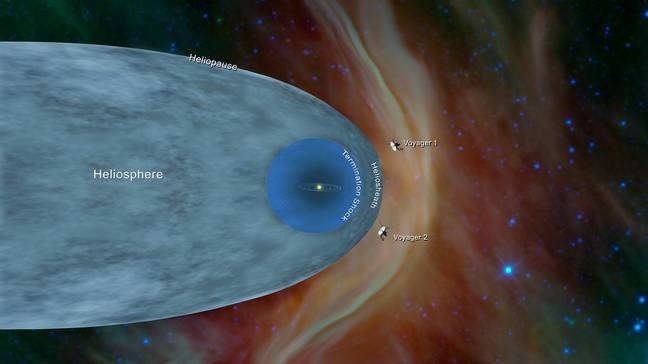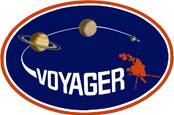Probe predicted to outlive Earth on five-billion-year galactic trip
NASA's Voyager 2, launched to study the Solar System's outer planets, has had its first readings from interstellar space, collected after travelling more than 11 billion miles over forty years, analyzed by scientists.
It is only the second probe to have sailed beyond the heliosphere – the expansive region made of plasma and magnetic fields generated by the Sun. It finally broke free from the Solar System to enter interstellar space last year, joining its twin companion Voyager 1, which exited in 2012.
The transmitted data was analysed by a large team of physicists, and their findings were published in five papers in Nature Astronomy on Monday this week. Specifically, the studies assessed Voyager 2's measurements of the cosmic rays, magnetic fields, the density of plasma and particles within and beyond the heliosphere.
A lot of the findings confirmed what was discovered when Voyager 1 left our tiny back yard in the universe, which is useful in itself. "The Voyager probes are showing us how our Sun interacts with the stuff that fills most of the space between stars in the Milky Way galaxy," said Ed Stone, lead author on one of the papers and a project scientist for the Voyager mission.
"Without this new data from Voyager 2, we wouldn't know if what we were seeing with Voyager 1 was characteristic of the entire heliosphere or specific just to the location and time when it crossed."
The heliosphere is a giant protective bubble that shields the Solar System from galactic cosmic rays. Made from plasma, it’s often described as the solar wind that flows throughout the system and blocked from going further by pressure in the interstellar medium. The small region in between both regions is known as the heliosheath, and the edge of the bubble is known as the heliopause.

A diagram describing the different parts of the heliosphere, the interstellar medium, and where the Voyager spacecrafts have travelled to. Image credit: NASA/JPL-Caltech
Voyager 2 found that the temperature of the plasma in the surrounding interstellar medium is lower than that in the heliosphere. Measurements also confirmed that the density of the plasma is higher outside, compared to inside, the heliosphere.
As the plucky probe passed through the inner edge of heliopause, the plasma density suddenly shot up for some unknown reason. The researchers believe that the plasma is being compressed, and aren’t quite sure what’s squeezing the particles.
Interestingly enough, Voyager 2 detected a stream of particles within the heliosphere leaking out into interstellar space – and the leak was larger than what was previously observed with Voyager 1.
One remaining mystery is the direction of the magnetic field on either side of the heliopause. They seem to be in parallel, or aligned in other words, but no one quite knows why. This alignment was discovered by Voyager 1, and has now been confirmed by the Voyager 2 data.
“In a historical sense, the old idea that the solar wind will just be gradually whittled away as you go further into interstellar space is simply not true," said Don Gurnett, co-author of a second plasma density paper and a professor emeritus of physics and astronomy at The University of Iowa in the US. "We show with Voyager 2 – and previously with Voyager 1 – that there's a distinct boundary out there. It's just astonishing how fluids, including plasmas, form boundaries."
Voyager 1 has traveled more than 13.6 billion miles (22 billion kilometres) from the Sun, while Voyager 2 is 11.3 billion miles (18.2 billion kilometres) away. Both probes will continue speeding into the depths of the Milky Way galaxy virtually indefinitely.
"The two Voyagers will outlast Earth," said Bill Kurth, co-author of one of the papers and a research scientist at the University of Iowa. "They're in their own orbits around the galaxy for five billion years or longer. And the probability of them running into anything is almost zero." ®
Sponsored: Delivering on the multi-cloud dream: Clear strategies for success
https://www.theregister.co.uk/2019/11/05/voyager_2_phone_home/
2019-11-05 05:04:00Z
52780426990103
Bagikan Berita Ini















0 Response to "Boffins hand in their homework on Voyager 2's first readings from beyond Solar System - The Register"
Post a Comment